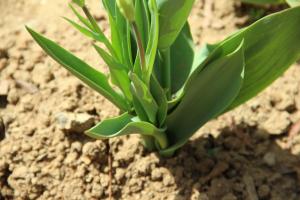Introduction
Tomatoes and zucchini are two popular vegetables that many gardeners enjoy growing. While they are often planted separately, some may wonder if it is possible to plant them together in the same garden bed. In this article, we will explore the topic of planting tomatoes and zucchini together and discuss the benefits and drawbacks of doing so.
Benefits of Planting Tomatoes and Zucchini Together
One benefit of planting tomatoes and zucchini together is that they can share space and soil nutrients. Tomatoes are heavy feeders and require a lot of nutrients to grow, while zucchini is a more efficient feeder that doesn't require as much. By planting them together, the zucchini can help to absorb excess nutrients in the soil, resulting in healthier plants overall.
Another benefit of planting tomatoes and zucchini together is that they can help to deter pests. Zucchini plants emit a chemical known as cucurbitacin that can repel some pests, including the tomato fruitworm. Additionally, planting a variety of vegetables in the same garden bed can create a more diverse ecosystem that is less prone to pest infestations.
Drawbacks of Planting Tomatoes and Zucchini Together
One downside to planting tomatoes and zucchini together is that they can both be susceptible to diseases. Tomatoes are known to be prone to blight, while zucchini can be affected by a variety of fungal diseases. By planting them together, these diseases can spread more easily between the plants, increasing the risk of a garden-wide outbreak.
Another potential drawback of planting tomatoes and zucchini together is that they may compete for resources. Both plants require a lot of sunlight, water, and nutrients to grow, and planting them too close together can result in reduced yields and smaller fruits. In order to avoid this, it is important to give each plant enough space and to provide adequate resources to both.
Tips for Planting Tomatoes and Zucchini Together
If you decide to plant tomatoes and zucchini together, there are some tips that can help you to maximize your yields and reduce the risk of disease or pest infestations:
Give each plant enough space to grow. Tomatoes generally require at least 2-3 feet of space between plants, while zucchini should be planted with 3-4 feet between hills.
Rotate your crops each year to avoid disease buildup in the soil.
Use companion planting techniques to help deter pests and improve soil health.
Provide adequate water and nutrients to both plants throughout the growing season.
Monitor your plants regularly for signs of disease or pest infestations, and take action immediately if you notice any issues.
Conclusion
In conclusion, planting tomatoes and zucchini together can have both benefits and drawbacks. While they can share space and nutrients and help to deter pests, they can also be susceptible to diseases and may compete for resources. By following the tips outlined above, gardeners can successfully plant these two vegetables together and enjoy a bountiful harvest with healthy, vibrant plants.

 how many times do yo...
how many times do yo... how many planted tre...
how many planted tre... how many pine trees ...
how many pine trees ... how many pecan trees...
how many pecan trees... how many plants comp...
how many plants comp... how many plants can ...
how many plants can ... how many plants and ...
how many plants and ... how many pepper plan...
how many pepper plan...































